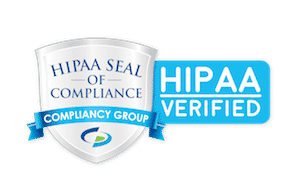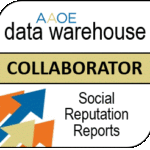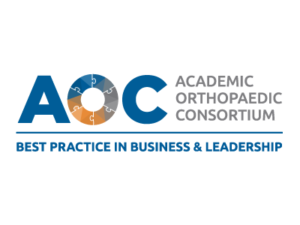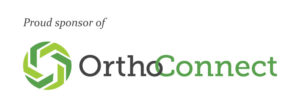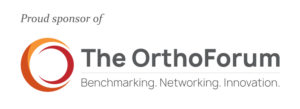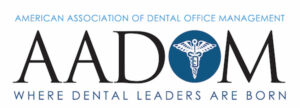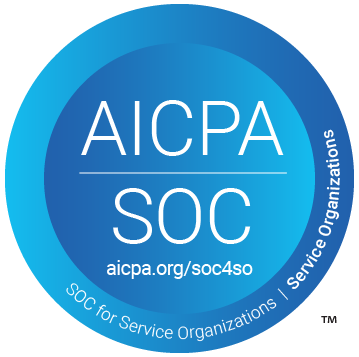Despite claims that print marketing is dead, our mailboxes continue to get stuffed with promotional postcards daily. While we all know that digital marketing dominates modern strategy, direct mail—particularly postcards—still continues to deliver results. The reality? The effectiveness of traditional postcard marketing endures. Let’s take a look at why.
Why Healthcare Organizations Benefit from Targeted Direct Mail
Over the past few years, the direct mail landscape has evolved significantly. Modern data analytics and targeting capabilities mean postcards can now reach precisely the right audience with hyper-personalized messaging. Rather than mass-mailing entire zip codes, savvy marketers can use demographic data, purchasing patterns, and consumer behavior to identify only the most high-value potential customers.
Healthcare organizations, in particular, benefit from this more targeted approach. When sending physical postcards to patients who match specific health indicators and lifestyle factors, practices see significantly higher response rates compared to old-school broad campaigns. For example, joint replacement postcards sent to qualified candidates based on age, location, and risk factors routinely outperform spray-and-pray postcard campaigns. They also consistently outperform digital-only campaigns.
The Physical Advantage: Creating Lasting Impressions
 This is likely because direct mail provides a tangible touchpoint in an increasingly digital world. While email inboxes overflow with promotions, a well-designed postcard can cut through the noise and create a lasting impression. Studies show that physical mail activates different neural pathways than digital content, leading to better brand recall and emotional connection.
This is likely because direct mail provides a tangible touchpoint in an increasingly digital world. While email inboxes overflow with promotions, a well-designed postcard can cut through the noise and create a lasting impression. Studies show that physical mail activates different neural pathways than digital content, leading to better brand recall and emotional connection.
The key here is integration. Successful postcard campaigns work best as part of a comprehensive marketing strategy, complementing digital efforts rather than simply replacing them. Statistics show that companies that pair direct mail with digital marketing experience a 450% boost in response rates. When you combine postcards with targeted online advertising, email campaigns, and precise tracking methods, postcards remain a valuable tool in the modern marketing kit.
Building a Synchronized Digital and Physical Strategy
So how do you develop a synergistic physical and digital strategy? Effective multi-channel marketing requires thoughtful timing and message coordination across platforms. When launching a postcard campaign, digital channels should support and amplify its impact. For instance, targeted social media ads can begin running just before postcards arrive, creating multiple touchpoints that reinforce your message.
It’s also critical to maintain consistency while adapting content for each channel’s strengths. While your postcard might feature a compelling headline and eye-catching visuals, your corresponding digital ads can provide more detailed information or video content. Both should drive toward the same call to action, whether that’s booking an appointment, visiting a specific landing page, or calling your healthcare practice.
Finally, before launching a multi-channel campaign, carefully evaluate whether this approach aligns with your goals and audience. Not every marketing strategy fits every situation.
When to Use Multi-Channel Marketing
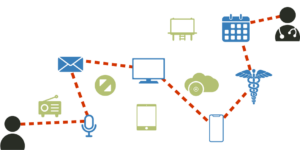
This multi-channel strategy approach makes the most sense when:
- You’re targeting a specific demographic or patient type
- The service has a high lifetime value
- Your message requires multiple touchpoints for conversion
- You have strong tracking mechanisms in place
- Your target audience responds well to physical mail
On the flip side, multi-channel campaigns involving postcards might not be effective when:
- The service has a low profit margin
- You need immediate results
- Your target audience is highly mobile or transient
- You lack the data infrastructure to track results
- Your message requires frequent updates or time-sensitive information
Leveraging Data Analytics for Campaign Optimization
If you decide a multi-channel approach is right for you, consider leveraging a data analytics tool like SocialClimb. Modern healthcare marketing platforms like this can not only supply you with relevant, targeted lists, but they can also track patient responses across channels, helping you understand which combination of touchpoints leads to the best conversion rates. This data then informs future campaign strategies, creating a continuous improvement cycle, all while saving money by keeping your campaign hyper-targeted.
The Future of Integrated Healthcare Marketing
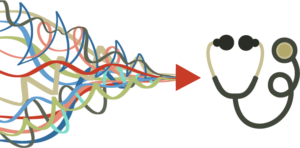 While the marketing landscape continues to evolve, postcard campaigns remain effective when executed strategically as part of an integrated marketing approach. The key lies not in choosing between digital and direct mail, but in leveraging both channels’ strengths through data-driven targeting and coordinated messaging. When your postcards arrive in carefully selected mailboxes, supported by strategic digital touchpoints and tracked with precision analytics, they become more than just another piece of mail—they become a powerful tool for patient acquisition and healthcare practice growth.
While the marketing landscape continues to evolve, postcard campaigns remain effective when executed strategically as part of an integrated marketing approach. The key lies not in choosing between digital and direct mail, but in leveraging both channels’ strengths through data-driven targeting and coordinated messaging. When your postcards arrive in carefully selected mailboxes, supported by strategic digital touchpoints and tracked with precision analytics, they become more than just another piece of mail—they become a powerful tool for patient acquisition and healthcare practice growth.
Success in modern healthcare marketing isn’t about abandoning traditional methods or jumping blindly into new ones. It’s about understanding your audience, coordinating your channels effectively, and measuring results to continuously refine your approach. When done right, postcard marketing doesn’t just survive in the digital age—it thrives alongside it.



